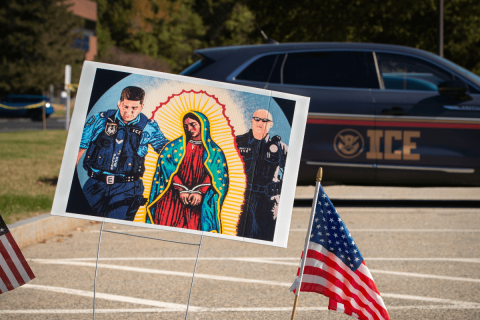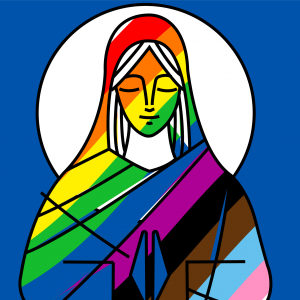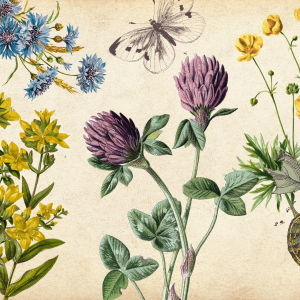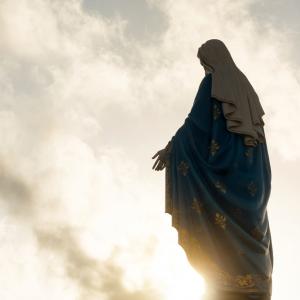
From The Magnificat to her assent to an extraordinary pregnancy, Mary offers a vibrant model of both faith and justice. Here are some of our favorite articles about Mary, the mother of Jesus.

Every age of Christian art has wrestled with power. From the earliest icons to contemporary murals and prints, artists have used sacred imagery to question authority, confront injustice, and call the church to stay accountable to its own ideals. As chaplain Federico Cinocca writes, protest art can serve as “a precious ally to help theology in its [critical] role and uncover narratives that reinforce marginalization.”

Like Mary, women the world over have had their childbirth plans disrupted by the pandemic, their path to motherhood rerouted, especially women of color.

Although the Roman Catholic Church might disagree with me, my Catholic faith revolves not around a man but rather a woman. Her hair is covered in an opaque veil; she wears a long white gown under a blue mantle. Her hands are outstretched and rays of light radiate from her fingertips, pouring down at her sides. Her name is Mary, mother of God, and within her rests the fulcrum of my queer Catholic joy and trauma.

In a cultural moment where religious deconstruction is being widely discussed, Mary offers us hope. I can only imagine over those nine months the questions, doubt, and frustration Mary felt toward the God who called her to be the mother of the savior of the world. And yet, we can have hope in this: that Mary was favored by God regardless of her doubt.
The Virgin Mary is inspiring everyone from Girl Scouts to Instagram-savvy nuns to restore local biodiversity.

I BEGIN IN the garden, which sounds biblical but is literal. It’s the day after the spring equinox, and I’m standing outside the Basilica of the National Shrine of the Immaculate Conception in Washington, D.C. The National Shrine is the nation’s largest Roman Catholic church. It’s stuffed to the vaulted ceilings with religious art, but I’m not here for the soaring mosaics and gilded icons.
What I’ve come to see — the Shrine’s Mary garden — turns out to be underwhelming. A statue of the Virgin presides over an empty reflection pool; the garden’s central fountain is also dry. The circular stone terrace is flanked by cherry trees and dormant bushes. The rose bushes are pruned back, and the tulips have yet to open. Except for cherry blossoms unfurling overhead amid a hum of bees, much of the garden still sleeps from winter. I expected a profusion of tangled plants and lush greenery, but this early in the season, nothing much is blooming.
I came to the garden looking for evidence of a movement. Pope Francis’ 2015 encyclical “Laudato Si’: On Care for Our Common Home” called for a global ecological conversion. Inspired by a faith that views humans as Earth’s caretakers, and guided by the science behind native gardening, Catholics around the world have heeded the pope’s call by planting native habitats. Parishes, backyards, and schools are restoring land with local species. Some habitats take the form of Mary gardens: devotional spaces that both honor the Mother of God and enhance biodiversity. Other habitats convert manicured landscapes into pollinator gardens.
The gardeners who tend these spaces range from Girl Scouts to a pair of Instagram-savvy nuns; what they share is a belief that planting native species is a practical way to integrate their faith and environmental values — and to respond to the climate crisis.

Mary’s example is an especially powerful one in these troubled times when people insist that their truth is the only truth.

MOST CHRISTIANS TODAY do not understand the life and teachings of Jesus as a broad vision of daring nonviolence. But scripture gives convincing evidence for this: The gospel of Luke presents Jesus as the God of peace who comes among us in total poverty into our impoverished world of war and empire, who brings with him God’s reign of peace and nonviolence, and who invites us to follow him on the path of love, compassion, and justice. With his birth, we hear the angels announce the coming of peace on earth.
Jesus, the greatest peacemaker in history, marked the path of peace toward Jerusalem, where he confronted imperial injustice and called us to learn the things that make for peace; he endured rejection, betrayal, torture, and execution in the holy spirit of nonviolence, and rose to offer his gift of peace and send us out all over again on his path of peace.
How did Jesus learn all this? Luke’s gospel offers an amazing answer. The writer presents Mary, Jesus’s holy Jewish mother, as his teacher of nonviolence.

The Jesus story begins with a young woman who also hears many critical voices around her. Mary lives in a culture that tells women they’re more property than persons. Galilee is considered the armpit of her society. Her religion portrays God as mostly a distant and disinterested deity.